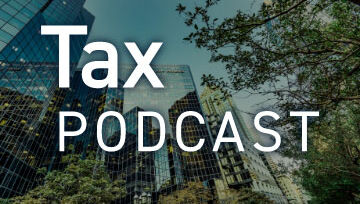Contributors:
Joe Hennessee, Strategic Financing Services Senior Manager
David Altman, Strategic Financing Services Senior Manager
Trevor Nelson, Strategic Financing Services Manager
Benefits of Combining Low-Income Housing Tax Credits (LIHTCs) and New Markets Tax Credit (NMTC) Financing for Affordable Housing Development
When it comes to affordable housing development, Low-Income Housing Tax Credits (LIHTC) have been the go-to tool for developers for decades. LIHTCs provide a deep subsidy, and government agencies and nonprofits alike are comfortable with the program, so there is often no need to expand the toolbox to continue producing affordable units. As such, many developers have traditionally overlooked New Markets Tax Credit (NMTC) financing due to the perceived inability to combine LIHTCs and NMTCs, along with the economics associated with the subsidy. With changes in the capital markets across almost every asset type, LIHTC developers have started to explore new tools to complete projects, which is why exploring how LIHTCs can be utilized with NMTCs might yield positive results.
Flexibility of NMTCs for Private Investment in Low-Income Communities
NMTCs were created to provide incentives for private investment in low-income communities. The tax credit is equal to 39% of the investment made in a qualified low-income community business or economic development project. Since its inception, NMTCs have been used to finance a wide variety of projects, including community centers, hospitals and retail developments. One of the best attributes of NMTCs is the program’s flexibility.
Leveraging NMTCs and LIHTCs for Complex Projects With Multiple Asset Types
For many, it is considered common knowledge that NMTCs and LIHTCs cannot be leveraged in the same structure. While not common historically, for the complex projects where the highest and best use calls for a multitude of asset types, developers can use NMTCs to finance the construction or rehabilitation of a condominium structure that separates the areas designated for low-income housing and the one used for commercial activities. Basically, the amount needed for the LIHTC subsidy could be designated as Condo A, and the NMTC subsidy would be designated as Condo B. Documentation for each of the condominiums would then need to reflect the different features of each type of tax credit. As both Condo A and Condo B are connected, particularly when even in the same building, another agreement needs to coordinate their coexistence in the same project. For a building, a Common Wall Agreement could be utilized for this purpose.
With escalating construction prices, the affordable housing industry continues to focus on producing holistic developments that do not just meet the tenants housing needs, but also meet the wider community needs. These shifts open a world of possibilities for LIHTC developers who have struggled to finance their projects in recent years. By using NMTCs in conjunction with other housing subsidies, developers can use a blend of capital sources to finance their overall projects more efficiently.
Using NMTCs to Finance Permanent Affordable Housing with Commercial Activities
Success Stories of Twinning Credits for Housing, Education, Healthcare and Community Services
Many CDEs deploy their NMTC allocation in projects that use commercial activities to support permanent affordable housing. Recently, such groups have funded healthcare-adjacent projects that involve housing and mixed-use developments, including LIHTC. Moreover, community organizations like YWCAs that offer affordable housing in addition to wrap-around services have seen success in twinning credits. Recently, professionals on the Strategic Financing Services (SFS) team at Cherry Bekaert worked with a prominent developer in Memphis on a ~$70mm development that delivered housing, education, healthcare, and arts & culture space to a community that greatly needed this type of holistic development. The housing was financed under a separate condo from the NMTC project that provided the diverse community benefits.
How NMTCs Expand Funding Options for LIHTC Developers
In a climate where getting deals done feels impossible, having more tools in the toolbox is essential. By using NMTCs to stack tax credits, LIHTC developers can now access more funding for their projects, which will ultimately lead to more affordable housing and commercial goods & services being offered to those that need it most.
Overcoming Challenges and Finding Hope with the Addition of NMTCs to the Toolbox
Using NMTCs in conjunction with LIHTCs is a game-changer for LIHTC developers. By using NMTCs to stack tax credits, developers can access more funding and finance their projects more efficiently. While there may still be challenges ahead for LIHTC developers, the addition of NMTCs to their toolbox provides a glimmer of hope in an otherwise challenging environment.
Your Guide Forward
Cherry Bekaert’s Strategic Financing Services team is comprised of knowledgeable professionals who can help you understand the potential benefits of combining LIHTCs and NMTCs. By getting involved in this program, you can not only benefit your business but also contribute to the economic growth and well-being of your local community. Don’t hesitate to reach out to our specialists if you have any questions or want to learn more about LIHTCs and NMTCs.





